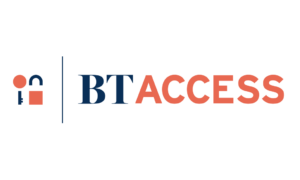What Financial Forecasting Model is Right For You?
Ever feel like you’re just guessing when it comes to your business’s future? You’re not the only one. Many entrepreneurs in our BrainTrust community have faced similar challenges. But here’s the thing: a clear financial forecast can turn those guesses into strategic plans for growth. If you’ve never done a financial forecast or feel your current method isn’t cutting it, no worries – we’re here to help. Financial forecasting is like a crystal ball for your business, combining past data and market trends to illuminate your path ahead. Ready to align your resources and strategies with confidence? Let’s explore five financial forecasting models that can catapult your business to new heights.
1. The Straight-Line
Imagine your business journey as a path stretching straight into the future. The Straight-Line Method does just that – it projects your future growth based on your past performance. Start by looking at your revenue growth over the past years. Let’s say your revenue has been increasing by 5% each year; you would then project that same growth rate moving forward. It’s a straightforward approach, perfect for businesses with a consistent growth pattern. The simplicity of this method makes it a great starting point, especially if you’re new to forecasting. Just fire up a spreadsheet like Excel, and you’re good to go. However, it’s a bit like driving with your eyes on the rearview mirror; it doesn’t account for unforeseen bends in the road ahead.
Best For:
Stable businesses with consistent growth
Pros:
Simple and easy to understand
Cons:
Assumes the future will mirror the past
Tools Needed:
Basic spreadsheet software (Excel or Google Sheets)
2. Moving Average Method
Now, think of your financial journey as a series of rolling hills. The Moving Average Method smooths out the peaks and valleys to give you a clearer view of your path. You’ll average out your revenue over a set period – say, the last three months – and use this average to predict the next month. It’s like getting a more ‘zoomed-out’ view of your financial landscape. This method works well for businesses with seasonal fluctuations, as it helps iron out those highs and lows. Excel can be your companion here too, with its built-in functions to calculate moving averages. It gives you a more current perspective but remember, it’s still looking at the road you’ve already traveled.
Best For:
Smoothens out fluctuations, providing a clearer trend
Pros:
Can be slow to respond to recent changes
Cons:
Businesses with fluctuating revenues
Tools Needed:
Statistical software like SPSS or advanced Excel functions
3. Regression Analysis Method
Imagine you’re solving a complex puzzle, where each piece represents a different factor impacting your business’s revenue. Regression Analysis is like finding out how each piece fits into this puzzle. It involves studying the relationship between your sales (dependent variable) and one or more independent variables, such as marketing spend, economic trends, or customer demographics. Essentially, you’re trying to see how changes in these independent factors affect your sales.
To perform a regression analysis, start by collecting data on your sales and potential influencing factors over a period. For example, if you own a boutique, you might look at how factors like your advertising budget, local economic conditions, and even weather patterns have influenced your monthly sales. Using statistical software like SPSS, you plot this data to see the correlations. The software will provide you with a regression equation – a mathematical representation of these relationships. This equation helps you predict future sales based on potential changes in your chosen variables. For instance, it could reveal how a 10% increase in your marketing budget might boost sales.
Best For:
Larger businesses with access to diverse data sets
Pros:
Considers multiple variables, offering a more nuanced forecast
Cons:
Requires statistical expertise and can be complex
Tools Needed:
Advanced analytics tools like SPSS
4. Time Series Analysis
Time Series Analysis tunes into the unique rhythm of your business’s financial performance over time. To conduct this method, start by collecting your historical sales data, which could range from months to years. Using Excel, plot this data on a graph to visualize how your sales have changed. Pay special attention to patterns like peaks during the holiday season or dips in slower months. This visual representation helps you spot trends and seasonality, crucial for predicting future performance. For more sophisticated analysis, software can be used to delve deeper into these patterns, identifying underlying trends and cyclical behaviors that might not be immediately apparent.
For example, consider a tax accountant who experiences a significant sales increase every spring. By plotting sales data over several years, the owner notices that sales consistently peak in March. This insight allows for strategic stock management and targeted marketing in anticipation of this surge. However, it’s important to stay alert to unexpected changes. For instance, if a new competitor enters the market or there’s an economic downturn, these factors could disrupt the established pattern. Time Series Analysis provides a clear view of your financial past and present, but always keep an ear out for those unexpected notes that might change your business’s financial tune.
Best For:
Seasonal businesses like retail or tourism
Pros:
Effective for businesses with strong seasonal patterns
Cons:
May not account for sudden market changes
Tools Needed:
Time series analysis tools in Excel
5. Qualitative Method
Sometimes, your journey needs insight beyond numbers. The Qualitative Method involves tapping into expert opinions and market research. This could mean discussing with industry veterans or conducting customer surveys. It’s more subjective and relies on human judgment. While it might lack the precision of numbers, it’s invaluable for new markets or products where historical data is scarce.
Best For:
Startups or new market entries
Pros:
Useful when limited historical data is available
Cons:
Subject to bias and less precise
Tools Needed:
Market research services and expert consultation platforms
Navigating the financial future of your business doesn’t have to be a daunting task. With the right forecasting method, you can turn uncertainties into opportunities for growth and resilience. Whether it’s the straightforwardness of the Straight-Line Method, the insight of Regression Analysis, or the adaptability of the Qualitative Method, each approach offers a unique lens to view your business’s financial health. Remember, the key to successful forecasting lies in understanding your business’s rhythm and choosing the method that resonates with your journey. Embrace these tools, and you’ll be well on your way to crafting a future as bright and promising as your entrepreneurial spirit.



